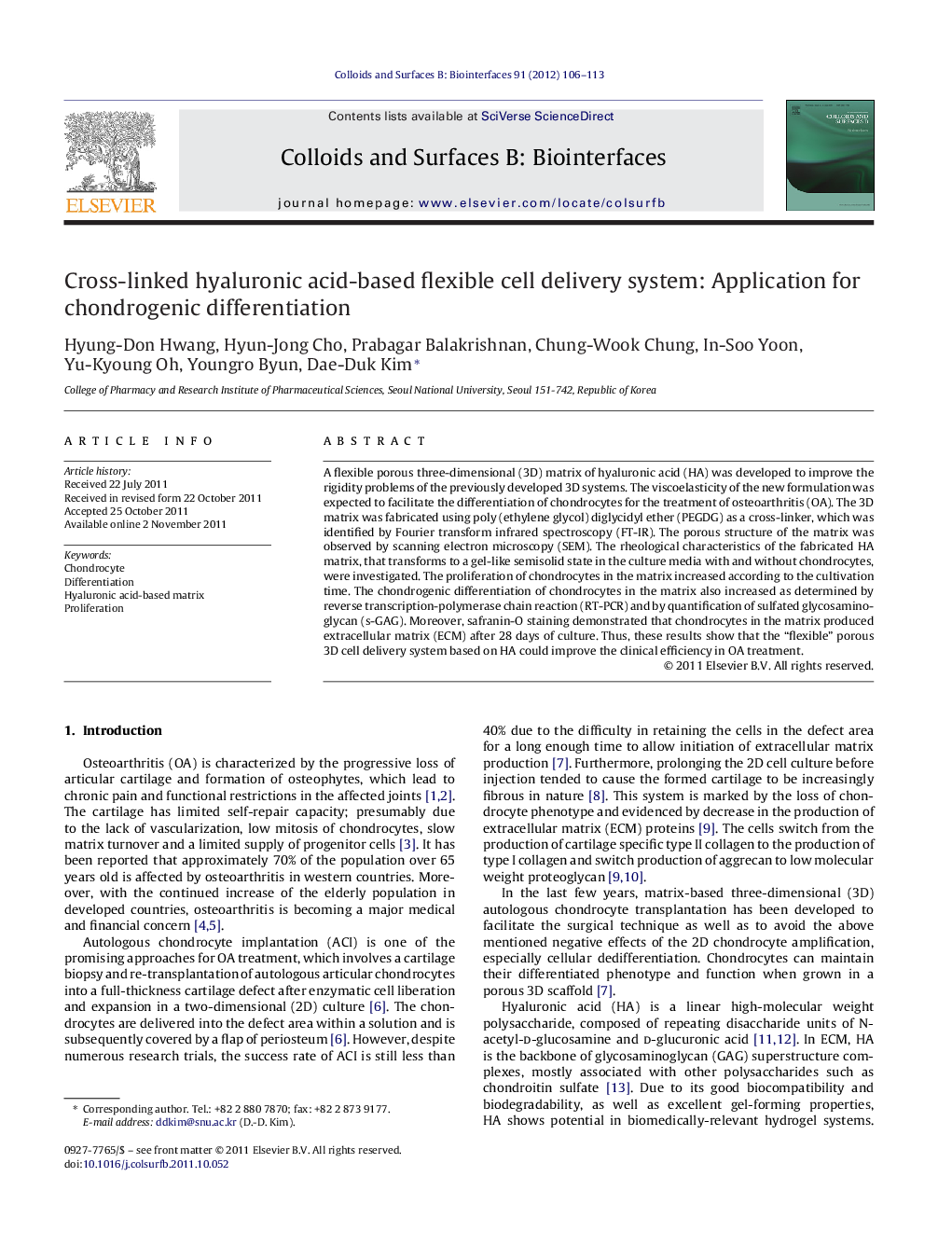| Article ID | Journal | Published Year | Pages | File Type |
|---|---|---|---|---|
| 600794 | Colloids and Surfaces B: Biointerfaces | 2012 | 8 Pages |
A flexible porous three-dimensional (3D) matrix of hyaluronic acid (HA) was developed to improve the rigidity problems of the previously developed 3D systems. The viscoelasticity of the new formulation was expected to facilitate the differentiation of chondrocytes for the treatment of osteoarthritis (OA). The 3D matrix was fabricated using poly (ethylene glycol) diglycidyl ether (PEGDG) as a cross-linker, which was identified by Fourier transform infrared spectroscopy (FT-IR). The porous structure of the matrix was observed by scanning electron microscopy (SEM). The rheological characteristics of the fabricated HA matrix, that transforms to a gel-like semisolid state in the culture media with and without chondrocytes, were investigated. The proliferation of chondrocytes in the matrix increased according to the cultivation time. The chondrogenic differentiation of chondrocytes in the matrix also increased as determined by reverse transcription-polymerase chain reaction (RT-PCR) and by quantification of sulfated glycosaminoglycan (s-GAG). Moreover, safranin-O staining demonstrated that chondrocytes in the matrix produced extracellular matrix (ECM) after 28 days of culture. Thus, these results show that the “flexible” porous 3D cell delivery system based on HA could improve the clinical efficiency in OA treatment.
Graphical abstractFigure optionsDownload full-size imageDownload as PowerPoint slideHighlights► Flexible cross-linked hyaluronic acid-based matrix was synthesized. ► Rheological study revealed its flexibility. ► Proliferation of chondrocytes and chondrogenic differentiation were identified.
